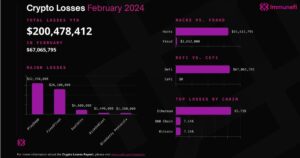The age of Artificial Intelligence has opened doors for different forms of innovations and inventions spanning different fields. Healthcare, for instance, has received a tremendous amount of boost all thanks to technology. Healthcare systems globally have considerably leveraged technology to save lives and reduced significant amount of money involved in the diagnosis and eventually treatment of the patient.
Bedsores, for example, have been a constant source of pain and costs for patients in the U.S. The condition, which is also known as pressure injuries, is chiefly acquired in the hospital, and according to the U.S. Agency for Healthcare Research in Quality, has become the second most common reason for medical malpractice lawsuits in America. The costs incurred in managing the patient’s acute needs due to pressure injury is in the upward of $26 billion, which by all metrics is a mind-numbing amount.
Advanced risk assessment model unveiled
The legal suits, coupled with the costs, have prompted researchers from the esteemed Johns Hopkins University and University Hospitals Cleveland Medical Center to collaborate and develop machine-learning techniques to develop new models of predicting pressure injuries. The new risk assessment model has garnered fame due to its accuracy in predicting at least by 74%, a 20% increase over the existing methods. The Braden scale, which has been in use since the 1980s, has been known to be time-consuming and taxing on nurses at the bedside.
The new model, which is called predictive analysis, provides an enviable opportunity for lifting some of the burdens imposed on nurses and other healthcare workers by automating activities such as the risk-assessment process. The model also reduces costs chiefly because the risk-assessment process can take between 5-15 minutes per patient, and this can easily add up to 250 labor hours in a single 500-bed facility on a daily. This could translate to at least 30.000-90,000 labor hours annually.
Promoting health equity and improved outcomes
Having mined data of at least 35,000 patients hospitalized over five years at two hospitals, the researchers were able to comprehensively analyze risk over time. The researchers then deployed machine-learning practices such as random forests and neural networks to get to changes and risks of a pressure injury case and come up with the final model. Such an undertaking represents a giant leap in medical technology as researchers and hospitals seek to maximize artificial intelligence technology. The use of artificial intelligence opens a door of possibilities in the medicine world, which could see hospitals and individuals get better diagnoses and treatment for life-threatening ailments such as pressure injuries.
Original Source: BMJ Open (2024)
